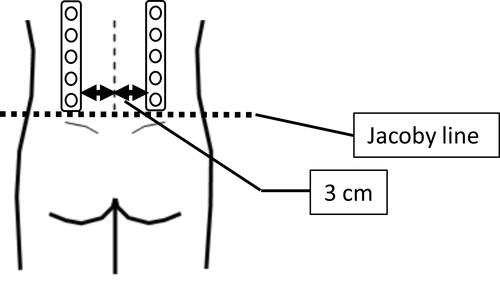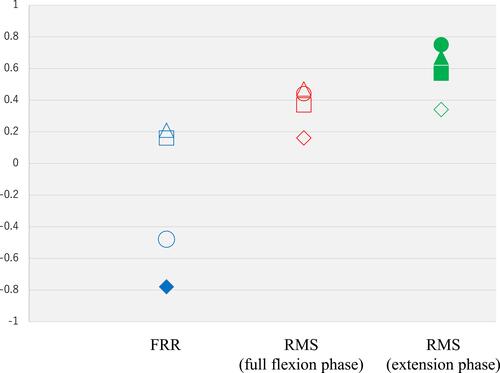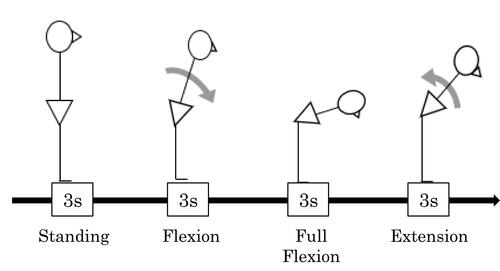Figures & data
Figure 2 The approximate position of the EMG grid. The EMG electrode grid was placed 3 cm lateral to the lumbar spinous process on the bilateral erector spinae.

Table 1 Patient Characteristics
Table 2 Cross-Correlations at Zero Lag Indicating the Level of Cross-Sectional Associations Over Time Between Pain-Related Factors and Muscle Activity
Figure 3 The correlation coefficients between each of the pain-related factors and muscle activity at zero lag.


